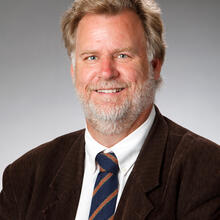Same as It Ever Was?
In the Talking Heads song “Once in a Lifetime,” the refrain repeats over and over: “Same as it ever was, same as it ever was....” Whether the refrain is meant to reflect the constancy of sameness or the inevitability of change is an open question. There is in life a tension between the predictability of change and growth and the permanence and stability of reality. The Easter experience of the apostles reveals to us to a number of ancient examples that bear witness to the tension between permanence and change.
We know that God is the same as God ever was, unchanging and eternal, revealed to Moses as “I am who I am” (Ex 3:14). At the heart of God’s unchanging being are unity and love. Yet the way in which God’s unity and love were revealed to the apostles and the disciples of the earliest church shattered expectations about the nature of God. By the sending of God’s own Son, Jesus Christ, to save us through the conquest of death and sin, and then in the giving of the Holy Spirit to comfort and guide the church, something had changed about how we knew and experienced God’s being and love.
It is not that the love of God was new to the Jews. As the first letter of John expresses it, “Let us love one another, because love is from God; everyone who loves is born of God and knows God.” God’s love had been made manifest throughout Israel’s history. Yet “God’s love was revealed among us in this way: God sent his only Son into the world so that we might live through him.” In the manifestation of God’s son, something new had happened.
The newness is found in the growth of the post-Easter church as it tried to make sense of what Jesus had wrought not just for his small group of disciples but for all humanity. There was not a clear-cut path for the church, a blueprint or manual that laid out a five-year plan for church growth. What the apostles had was the gift of the Holy Spirit to help them make sense of their mission and to discover what the church was to be.
There is an inherent wildness in the Holy Spirit, a sort of untameability or unmanageableness, and the work of the Holy Spirit can challenge old ways of thinking and acting. It certainly challenged the early church, as we see in the extended encounter between Peter and Cornelius in the Acts of the Apostles.
By means of visions, prayer and the experience of the Holy Spirit, Peter is brought to a new realization: God has given the Holy Spirit even to the Gentiles. If this does not seem shocking, it is because we have lost the sense of wonder shared by Peter and the apostles that even the Gentiles can be saved. But Peter’s shock registers throughout Acts 10.
The newness of Gentile inclusion resonates throughout Peter’s proclamation: “I truly understand that God shows no partiality, but in every nation anyone who fears him and does what is right is acceptable to him.” This is new, something radically new, head-spinning even, for a new path is being cleared for the universal mission of the church. Peter does not wait to consult with the other apostles, but acts on the experience of the Holy Spirit in their midst. “Can anyone withhold the water for baptizing these people who have received the Holy Spirit just as we have?” Peter definitely could not. He did it. He baptized them.
One cannot deny the shocking change that came upon the disciples of Jesus through the Holy Spirit and the newness of Gentile inclusion, although Peter’s quick decision would need to be ratified by the church in the council at Jerusalem. But this newness also found its resting place in the state of permanence, that is, the unchanging love of God. For what the church was called to do was to bring to the whole world the call to keep God’s commandment, something old, made new in the revelation of the Son and the Holy Spirit. “This is my commandment, that you love one another as I have loved you”—this love of God and neighbor, the same as it ever was and made completely new.
This article also appeared in print, under the headline “Same as It Ever Was?,” in the May 4, 2015, issue.








